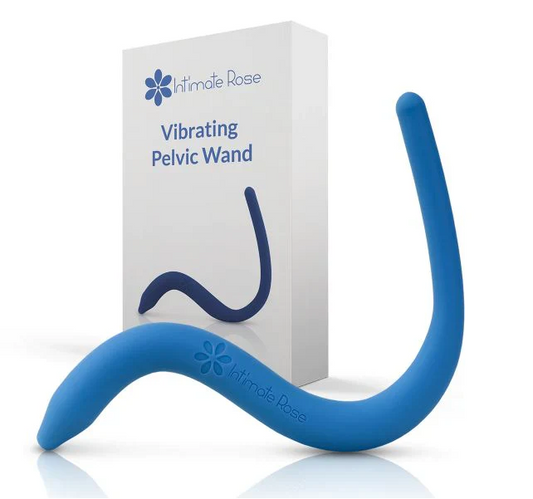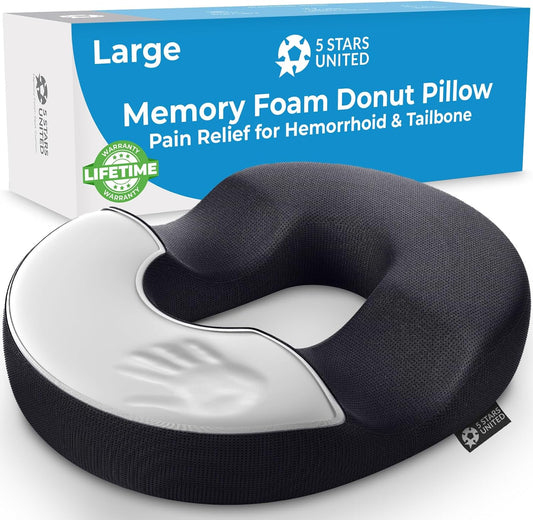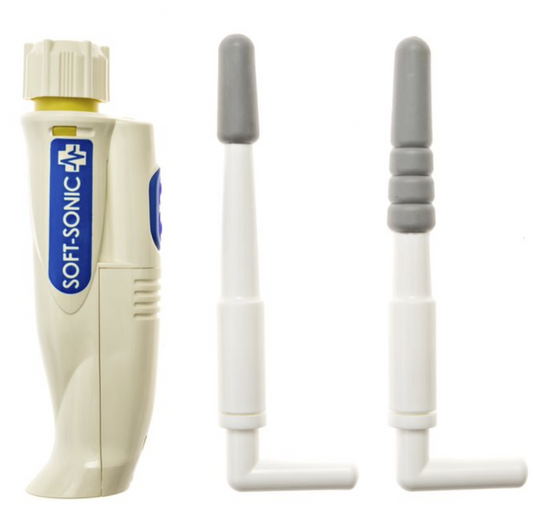
Does Prostate Massage Increase PSA Levels?
Share
PSA, or prostate-specific antigen, is a protein produced by the prostate. Doctors measure PSA levels to check for potential problems and decide whether more testing is needed.
While PSA tests can help detect issues early, the results are not always definitive. This is because certain activities, including prostate massage, can temporarily raise PSA levels.
In this article, we’ll look at how prostate massage can affect PSA levels and offer practical tips on when to schedule your test for the most accurate results.
What Is Prostate Massage?
Prostate massage involves gently stimulating the prostate gland through the rectal wall, typically using a gloved finger or a specialized device. It is sometimes recommended for men dealing with chronic prostatitis, pelvic pain, or discomfort caused by fluid buildup in the prostate.
This type of massage aims to improve blood flow, reduce inflammation, and help drain excess fluid that may be contributing to pain or pressure in the pelvic region.
Some men also use prostate massagers at home as part of their wellness routine.
How Does Prostate Massage Affect PSA?
Because prostate massage involves direct physical stimulation of the prostate, it can temporarily raise PSA levels. This happens as a result of prostate cells releasing more PSA into the bloodstream in response to the mechanical pressure.
In a study involving 199 men, researchers found that 6% experienced a PSA rise above 4 ng/mL after prostate massage. This is a meaningful spike that could influence clinical decisions, such as whether to order additional tests or even a biopsy.
The same study also found that complexed PSA rises more than total or free PSA. Since different tests measure different forms of PSA in your blood, this difference can affect how your results are interpreted.
Who Experiences PSA Spikes?
The good news is that only a minority of men experience clinically meaningful PSA elevations after prostate massage. However, certain factors make some individuals more susceptible to these changes.
Men with PSA levels close to the upper normal limit have a higher chance of seeing concerning jumps after a massage. If your PSA is around 3.5 to 3.9 ng/mL, the massage could push it over 4.0 ng/mL. This level often leads doctors to order more tests.
Age also plays a role. Older men usually have larger prostates, which means more PSA can be released during a massage. Their PSA levels also tend to be higher to begin with, making spikes more likely.
Additionally, men with existing prostate conditions show greater PSA elevations. Those dealing with benign prostatic hyperplasia (BPH) or prostatitis may experience more dramatic responses.
Inflamed or enlarged tissue responds more dramatically to physical manipulation than healthy tissue does.
How Does Prostate Massage Compare to Other PSA-Influencing Procedures?
To put prostate massage in proper perspective, let's examine how it stacks up against other medical procedures that affect PSA levels. This comparison helps you understand the relative impact of different interventions:
|
Procedure |
Effect on PSA |
|
Prostate Massage |
Manual manipulation of prostate tissue causing 6% of men to exceed 4 ng/mL PSA levels |
|
DRE |
Brief digital examination with minimal PSA elevation, typically insignificant |
|
Biopsy |
Needle sampling of prostate tissue causing almost universal PSA elevation lasting weeks |
|
Ultrasonography |
Transrectal ultrasound probe insertion resulting in ~11% experiencing PSA spikes |
Prostate biopsy causes the biggest rise in PSA levels. The needle damages tissue and causes bleeding, which can keep PSA high for 6 to 8 weeks. This makes it important to plan PSA tests carefully after a biopsy.
Transrectal ultrasound affects more men than a simple massage. About 11% see a PSA spike because the probe disturbs the prostate during imaging.
In contrast, a digital rectal exam rarely causes a meaningful PSA rise. This quick, gentle check is the safest before PSA testing.
PSA Testing Tips for More Accurate Results
Understanding how prostate stimulation affects PSA levels helps you avoid false alarms and unnecessary follow-ups. These simple steps make your results more reliable and keep your care on the right track.
Avoid Massage or DRE at Least 48 Hours Before PSA Tests
Healthcare professionals recommend avoiding prostate massage or a DRE for at least 48 hours before a PSA test. This waiting period allows any temporary rise in PSA to return to normal, helping ensure your results reflect your true baseline.
Massage-related PSA increases typically resolve within 24 to 72 hours. The 48-hour buffer is a general rule that covers most individual differences, including age, prostate condition, and frequency of manipulation.
Discuss Implications for Screening and Monitoring
For men undergoing regular prostate massage as part of therapy, timing becomes less about strict avoidance and more about consistency. Keeping the same interval between your massage sessions and PSA tests allows your doctor to track trends more accurately over time.
Talk with your provider about how your routine may influence PSA levels. They can adjust the testing schedule or interpret results with this context in mind to ensure your screenings remain meaningful and reliable.
Reschedule or Delay PSA Testing
Don't hesitate to reschedule your PSA test if you've had recent prostate manipulation. A few days' delay prevents potentially misleading results that could trigger unnecessary anxiety or additional procedures. Your peace of mind is worth the brief postponement.
Most importantly, discuss your massage routine openly with your healthcare provider. They can adjust screening protocols accordingly or interpret your results with proper context.
FAQs
Does occasional massage raise PSA?
Occasional prostate massage typically produces brief and transient PSA elevations. Most increases resolve quickly and don't affect long-term prostate health assessment.
How long does PSA stay elevated?
PSA elevations from massage are short-term, usually lasting just days. Most levels return to baseline within 48-72 hours after the procedure.
Should I avoid prostate massage entirely?
No, you shouldn't avoid prostate massage entirely. The therapy offers legitimate benefits for certain conditions. Simply time it appropriately around PSA tests to avoid interference with results.
Unlock Better Prostate Health Naturally with Our Sonic Prostate Massager
Understanding PSA fluctuations empowers you to make informed decisions about prostate health management. While massage can temporarily affect test results, it remains a valuable therapeutic option when used correctly.
The key lies in proper timing and communication with your healthcare team. By spacing massage sessions appropriately before PSA testing, you can enjoy the benefits of therapeutic massage without compromising the accuracy of your health monitoring.
For men seeking convenient and effective prostate massage therapy, our patented Sonic Prostate Massager offers a powerful solution designed for optimal results and comfort.
This innovative device supports men’s health by promoting circulation, relieving pressure, and enhancing overall prostate wellness in a safe and comfortable way at home.
Order now and take control of your prostate health with confidence!




